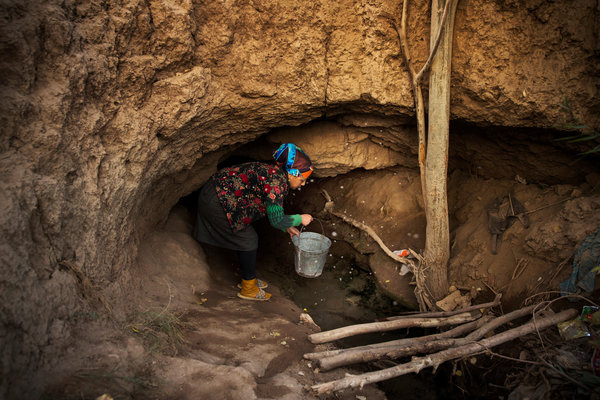每日一词:Karez | 坎儿井
编辑:给力英语新闻 更新:2016年9月25日 作者:纽约时报

在吐鲁番坎儿井打水。“我们的祖先很了不起,他们建这些的时候没用机械工具,”现年29岁的萨拉伊丁·奈杰迈丁说。他的家族世世代代在吐鲁番种葡萄。
Karez,《牛津大辞典》解释为:(in parts of central southern Asia) a qanat。美国韦氏词典考证词源,认为karez一词来源于波斯语。《英汉大词典》解释为:(中南亚地区的)暗渠、坎儿井。
《纽约时报》发表于9月21日的文章《新疆水危机:干涸的坎儿井》中,介绍了这种名为“坎儿井”的渠道系统,称它是一项工程奇迹,一直让科学家为之惊叹,也令吐鲁番的维吾尔人充满了自豪之情。然而这一工程奇迹如今正面临困境。由于石油开采和工业化农业生产,曾在50年代有近1800口的坎儿井,目前仅有200出头还正在使用。每一年,都有十多条地下渠道干涸。还有一些因为油污而遭废弃。
Known as karez, the system of channels is an engineering marvel that has long fascinated scientists and filled this city’s ethnic Uighurs with pride.
There are just over 200 working karez in the region, down from nearly 1,800 in the 1950s, according to government figures. Every year, as many as a dozen of the underground tunnels run dry. Others, contaminated by oil, are abandoned.